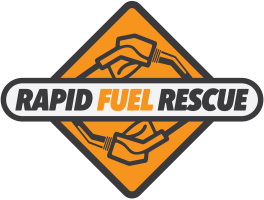AdBlue in Fuel Tank: Causes, Effects, and Solutions
Diesel vehicles with Selective Catalytic Reduction (SCR) technology rely on AdBlue to cut harmful nitrogen oxide (NOx) emissions. But what happens if AdBlue accidentally enters the fuel tank? This mistake is more common than you think—and the consequences can be serious.
In this guide, we’ll explore what AdBlue is, why it should never mix with diesel, the potential damage it can cause, how to fix the issue, and ways to prevent it. We’ll also answer the most common questions people ask about AdBlue in fuel tanks.
What is AdBlue?
AdBlue is a non-toxic, colorless liquid made from 32.5% high-purity urea and 67.5% deionized water. It’s not a fuel or an additive. Instead, it’s stored in a separate tank in diesel vehicles equipped with SCR systems.
When injected into the exhaust system, AdBlue helps break down harmful gases into nitrogen and water vapor—both harmless to the environment.
Why AdBlue Should Never Go in the Fuel Tank
AdBlue is designed for the exhaust system, not the engine. Adding it to the fuel tank is a critical mistake for several reasons:
- Chemical Composition
AdBlue is mostly water and urea. Diesel engines are not built to run on such a mixture. If it reaches the combustion chamber, it can cause severe corrosion and blockages. - Fuel Contamination
Even small amounts of AdBlue can ruin diesel fuel quality. It reacts differently under pressure and heat, forming crystals that clog the fuel system. - Engine Damage
Injectors, pumps, and the high-pressure common rail system are extremely sensitive. AdBlue contamination may cause them to fail, leading to expensive repairs.

What Happens if AdBlue is Put in the Fuel Tank?
The impact depends on how much AdBlue was added and whether the engine was started:
- If the engine is not started
Damage can often be prevented. The contaminated fuel tank can be drained, cleaned, and refilled with clean diesel. - If the engine is started
The risk increases dramatically. AdBlue will circulate through the fuel system, leading to:- Clogged injectors
- Fuel pump damage
- Corrosion in fuel lines
- Engine misfiring or stalling
Repairs can range from a simple tank drain to a complete fuel system replacement, which may cost thousands.
What to Do if AdBlue Gets in the Fuel Tank
- Do not start the engine
This is the golden rule. Turning on the ignition will circulate AdBlue through the system. - Call a fuel rescue service
Many roadside assistance companies offer wrong fuel recovery, including draining and cleaning contaminated tanks. - Drain and flush the tank
A professional will safely remove the contaminated mixture, clean the fuel system, and dispose of waste fluid responsibly. - Refill with clean diesel
Once the system is flushed, the vehicle can be refueled and restarted
Put the Wrong Fuel in Your Car? Don’t panic! Rapid Fuel Rescue specializes in wrong fuel services across Perth. Our expert team will drain, flush, and refill your tank quickly so you can get back on the road safely. Call Rapid Fuel Rescue today for fast, reliable, and affordable service within 70kms of Midland, WA.
Preventing AdBlue Misfuelling
Accidentally filling the diesel tank with AdBlue is avoidable. Here’s how:
- Check before filling: Diesel and AdBlue caps are usually different colors and sizes. Double-check before refueling.
- Use labeled containers: If you store AdBlue at home, always keep it in a marked container.
- Don’t rush: Most misfuelling cases happen when drivers are distracted or in a hurry. Take a moment to confirm.
- Install an anti-misfuelling device: Some cars come with built-in safeguards, but aftermarket solutions are also available.
Cost of Fixing AdBlue in Fuel Tank
The cost varies depending on the situation:
- Tank drain only: $200–$400
- Tank + fuel line flush: $400–$800
- Full system damage (injectors, pumps, etc.): $2,000–$8,000+
The earlier you act, the cheaper the fix.
Why AdBlue Errors Are Becoming More Common
With stricter emissions regulations, more diesel cars and trucks now use SCR technology. Since both diesel and AdBlue are refilled at fuel stations, confusion is inevitable.
Fleet drivers, taxi operators, and first-time diesel car owners are the most at risk. Awareness is key to prevention.
FAQs
Q1. What happens if I put AdBlue in my diesel car?
If the engine is not started, the AdBlue can be drained with minimal damage. If the engine runs, the AdBlue will damage the fuel system and may require costly repairs.
Q2. Can AdBlue damage the engine?
Yes. AdBlue causes corrosion, injector blockages, and pump failure when it enters the fuel system.
Q3. Can I fix AdBlue in a fuel tank myself?
No. It requires professional draining and cleaning. Attempting DIY fixes can make the damage worse.
Q4. How much does it cost to fix AdBlue contamination?
Anywhere from a few hundred dollars for a drain to several thousand if the engine was started.
Q5. Is AdBlue the same as diesel additive?
No. AdBlue is not a fuel additive—it’s an exhaust treatment fluid. It should never mix with diesel.
Q6. Can I drive with a little AdBlue in the fuel tank?
No. Even small amounts can cause damage. Do not drive the vehicle—call for help immediately.
Q7. How can I avoid putting AdBlue in the wrong tank?
Always check labels, avoid rushing at fuel stations, and consider anti-misfuelling devices.
Q8. Does insurance cover AdBlue misfuelling?
Some insurance policies cover misfuelling, but not all. Check with your provider.
Final Thoughts
Putting AdBlue in a diesel fuel tank is a costly mistake—but one that can be fixed quickly if caught early. The most important step is to avoid starting the engine and call for professional help immediately.
As diesel vehicles with SCR systems become more common, knowing the role of AdBlue and how to handle mistakes is essential for every driver.
By staying alert at the pump, using proper labels, and acting fast if an error occurs, you can save yourself from unnecessary stress and expensive repairs.
